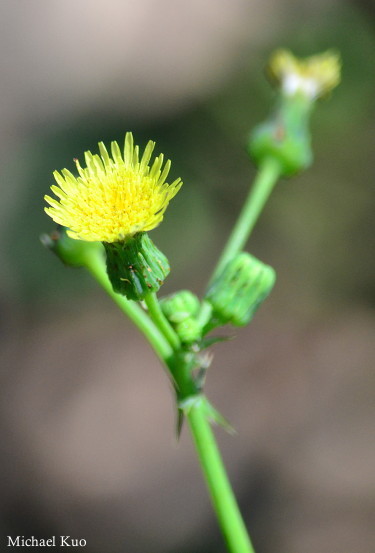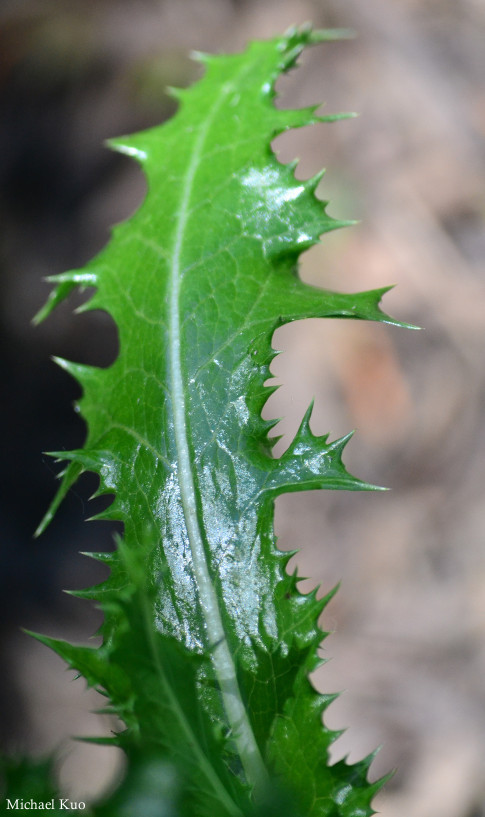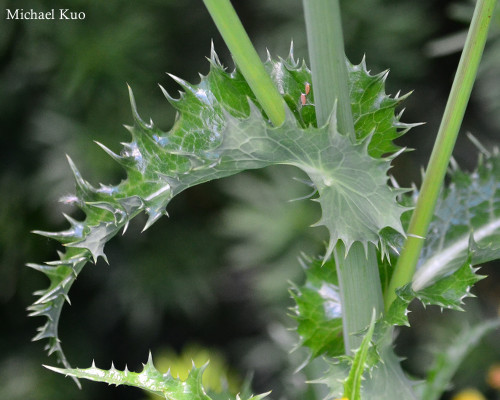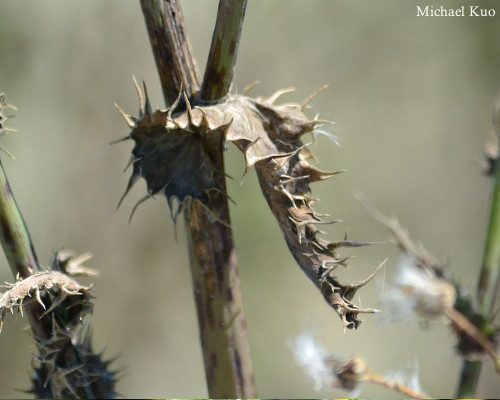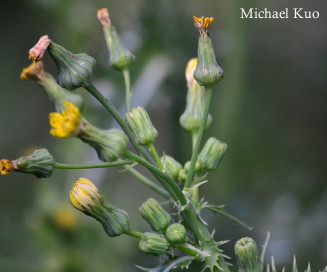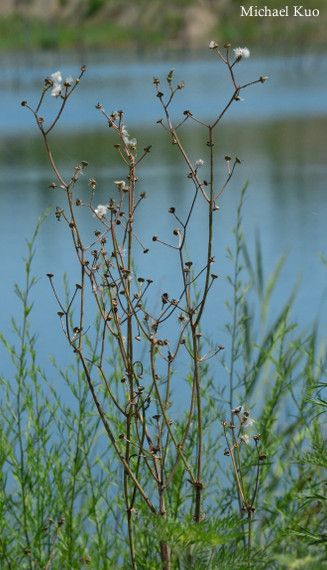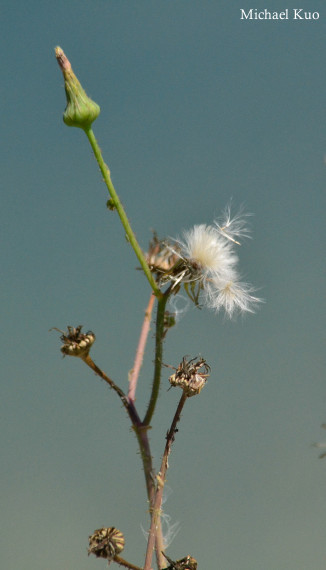
Sonchus asper (prickly sowthistle) |
|
|
But while this putative difference is quite often borne out, it very much depends on which leaves one observes (young or old, near the top of the plant or near the bottom, and so on) and on whether the plants are doing what they're supposed to do. Sometimes plants don't read about themselves in field guides and floras! More technical treatments often resort to analysis of the seeds to separate the two plants. The seeds of prickly sowthistle are said to be ribbed lengthwise, while the seeds of common sowthistle are both ribbed and pimply. The seeds in question are so small that a magnifying glass or dissecting microscope is required; we're talking about the little hard thing at the end of the fuzzy white stuff that helps the seed glide through the air. But guess what? In our experience, anyway, the "pimple-iness factor" can vary; we once found seeds matching both descriptions on the same plant—even in the same flower. Ultimately, we rely on a combination of features to separate prickly sowthistle from common sowthistle: 1) the prickles are usually much larger on leaves of prickly sowthistle; 2) the central vein on the underside of the leaf is finely prickly on leaves of common sowthistle, but smooth on prickly sowthistle leaves; 3) prickly sowthistle leaves are darker and glossier (at least, when young and fresh); 4) the leaf bases do tend to be curved for prickly sowthistle and straight for common sowthistle (see above), especially near the top of the plant; and 5) in our area, at least, prickly sowthistle begins to appear in June, about a month earlier than common sowthistle, which shows up in July (both plants, however, remain through the summer and fall). Both species appear throughout the Midwest. Another sowthistle, field sowthistle (Sonchus arvensis) also appears; its flowers are much larger (4–5 cm across). |
|
|
|
|
|
|
|
|
References: Jones 1971, Wilkinson & Jaques 1972, Voss & Reznicek 2012, Mohlenbrock 2014, Hilty 2017, USDA 2017. Kuo, Michael & Melissa Kuo (December, 2017). Sonchus asper (prickly sowthistle). Retrieved from the midwestnaturalist.com website: www.midwestnaturalist.com/sonchus_asper.html All text and images © , midwestnaturalist.com. |
